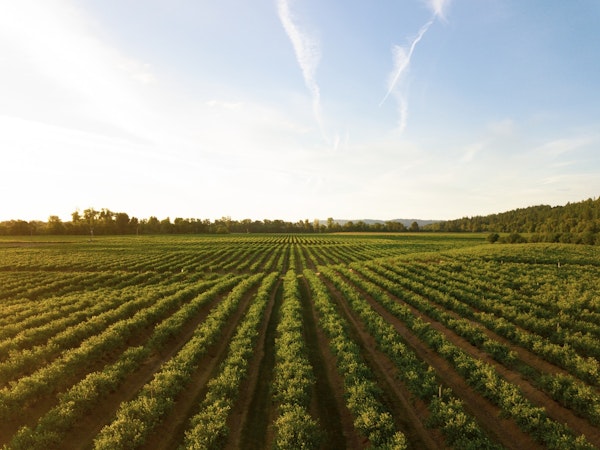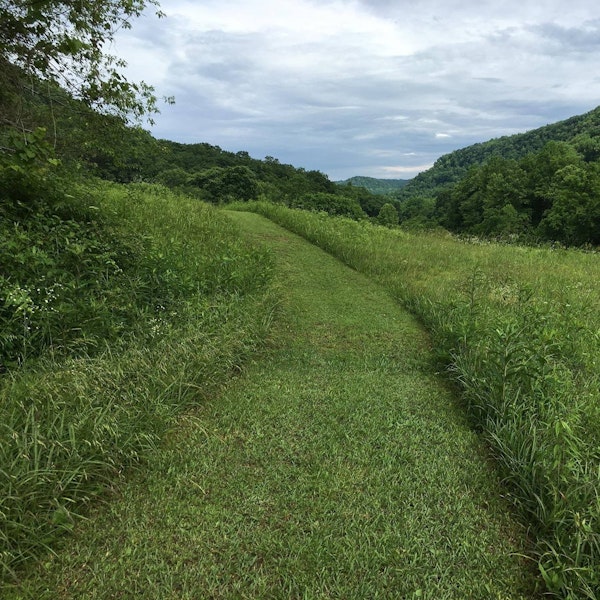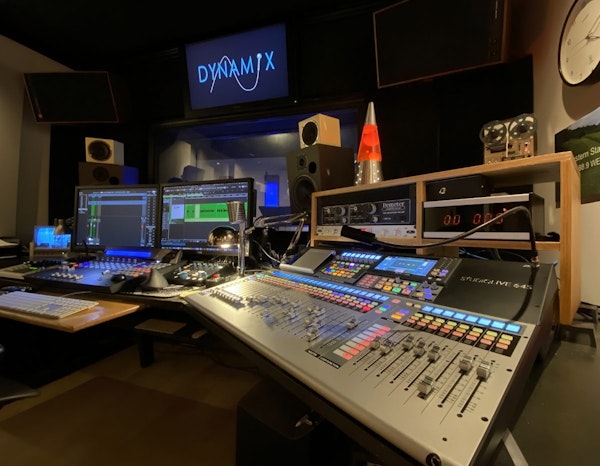Today's farm is not at all like your grandfather's farm. It's a high-stakes business for farmers who expect high-yields. And what's driving up those yields? Technology. Since the Newcomen steam engine of the late 1700s, the agriculture industry has been progressively adopting new technology and science to feed the world. And now high-tech farming is getting even more high-tech. Farmers are using exciting new sound technologies and practices to coax more out of their crops, keep their livestock happy, and keep themselves safe.
The smartphone is a ubiquitous device that's as easily at home at the stock exchange on Wall Street as a stock yard in Wyoming. With one swipe, farmers can monitor livestock health in real time, get immediate data on soil nutrients and moisture, and even be notified when a cow is about to give birth. These advanced technologies rely on cameras and sensors. Adding microphones to data collection opens up a whole new level of connected innovation for farmers.
An exciting new technology that Dutch and Canadian scientists are very close to implementing listens to pigs to determine how they feel. You read that right, they're trying to read a pig's emotions by listening to their squeals. “I am convinced we will see the mental state of animals being monitored on a commercial basis in the next few years,” says Daniel Berkmanns, a bioengineering professor at KU Leuven in Belgium. He goes on to explain, “Pigs are intelligent animals and we should use their intelligence. If you put animals in a pen they will behave like stupid animals, but if we recognize that they are individuals with different needs and responses, we can react accordingly. It will enable us to make things more interesting for them and us, and potentially result in better outcomes.” Those better outcomes are healthier and happier animals.
At the University at Ghent in Belgium, researchers are using sound analysis to detect disease in pigs very early. “Most disease in pigs is respiratory. With some diseases you can detect signs just three hours after infection,” Berkmanns said about the burgeoning technology. “The system detects a sick cough and sends an SMS message to the farmer, who can go out and decide if they need to call a vet. This kind of system reduces the use of antibiotics on farm.”
Another study by a multi-international team in Europe defined pig grunts succinctly: “There are clear differences in pig calls when we look at positive and negative situations" said Elodie Briefer. She co-led the study and is an Associate Professor of the University of Copenhagen’s Department of Biology. "In the positive situations, the calls are far shorter, with minor fluctuations in amplitude. Grunts, more specifically, begin high and gradually go lower in frequency. By training an algorithm to recognize these sounds, we can classify 92% of the calls to the correct emotion,” Briefer explained. The research team recorded 7414 sounds from 411 pigs in different scenarios, from birth to death.
Sound and farm animals may go together like Oreos and milk. Farmers have been playing music to milk cows for some time now. Many swear by the results, and it appears research has backed them up. In the UK, the University of Leicester conducted a study that found cows prefer slow music, like Simon and Garfunkel's "Bridge Over Troubled Water" and Beethoven's "Pastoral Symphony." If milk cows have a low stress level, their milk production increases. If they become stressed, like when listening to fast music (100 beats per music or faster), their milk levels decrease.
How about music and crops? Studies have shown that house plants do indeed respond to music with more growth. Jazz and classical music with tones between 115 - 250 Hz a few hours a day seem to be optimum for plant health. Scientists think that frequency range is similar to the natural world, and in particular the sound of running water. This method may work in greenhouses, but blasting Charlie Parker's "Yardbird Suite" to acres and acres of crops isn't feasible for most farmers. Instead, they play sounds of birds.
There's no sound more frightening to a bird than that of a hawk dive-bombing toward them for the kill. That's what the makers of Bird Gard hope. The battle between farmers and birds has been long fought. Scarecrows, tin pans on stakes, netting, and other marginally effective solutions have been employed for years. But now farmers are strategically placing Auditory Deterrent Devices (ADD) around their fields that emit species-specific distress calls along with war cries of various birds of prey. Bird Guard can customize the units to a farmer's crop, industry, or problem bird. ADDs can also be used to deter deer from crops, seals from salmon farms, and bats from turbines. A propane canon, another ADD device, is also frequently used. These are very controversial because they let out a random thundering boom that scatters birds. They only work for so long, however. In time, birds seem to ignore the blasts. People however, don't.
And finally, noise pollution and exposure awareness are slowly making inroads to farms. A growing number of agriculture workers are using more hearing protection while operating large machinery and high-decibel tools. A large combine operated with the cabin closed can still generate sound levels equal to a typical gas-powered lawn mower. Sustained exposure over long periods is as damaging to hearing as short bursts of sounds like explosions. The Australian Parliament commissioned a report, “Extent and cause of hearing loss impairment in Australia” (2008-2010), that revealed the agricultural sector of farming has high levels of hearing loss. Australian farmers have 65% measurable hearing loss compared to 22-27 % of the general population. The data also found that young farmers have more hearing loss compared to the general population, and it occurs 10-15 years earlier.
All these recent developments just go to show you how tech-savvy and forward-thinking farmers are. New technology and methods are helping to create herds that are happy, crops that are content, and farmers that are fulfilled. The next frontier is psychology. Farmers must figure out how to get all those stress-free cows to counsel the pigs when they're blue.








